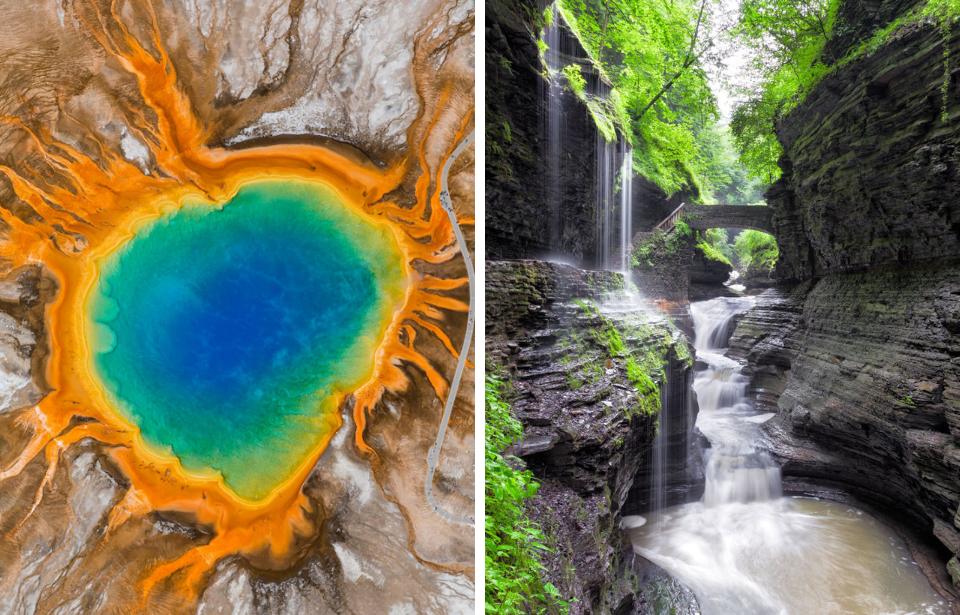Throughout the world there are so many beautiful places, from picturesque ancient cities to sprawling natural landscapes and everything in between. Although every country has its own lovely destinations, there is certainly no shortage of gorgeous sites in the United States. Spanning numerous states, these are seven of the most beautiful places in America.
Watkins Glen State Park, New York
Located in the New York Finger Lakes region, Watkins Glen State Park is a beautiful site in its own right. It was officially opened to the public in 1863 and it was operated as a tourist resort. In 1906 the state purchased it and converted it into a park. Although it contains many hiking trails, the centerpiece is undoubtedly the Rainbow Bridge which spans a 120m deep gorge and waterfall.
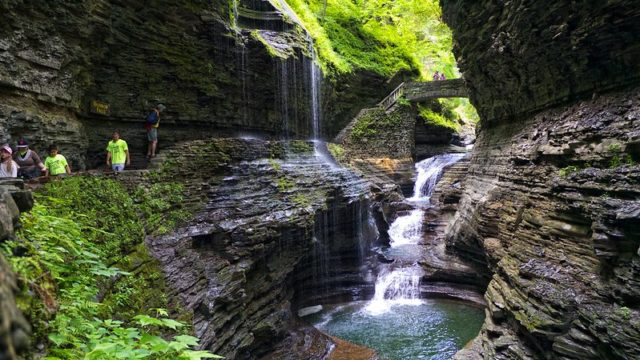
The gorge covers 778 acres across the park. It was originally created by the Glen Creek when the landscape changed during the Ice Age to allow rapids and waterfalls in the area, gradually eroding the surrounding rock. The entire park is beautiful, with 19 waterfalls spaced out along the main hiking trail. It certainly makes a great place to set up a tent in the nearby campground.
Crater Lake National Park, Oregon
Crater Lake National Park in Oregon features a stunning, you guessed it, volcanic crater lake. Surrounded by tall mountain ranges full of stunning pine trees, the water is captivatingly reflective. Especially on a clear day, it looks like the clouds are floating in the lake and not over your head. It was formed over 7,700 years ago when the volcanic Mount Mazama collapsed and was gradually filled with water.
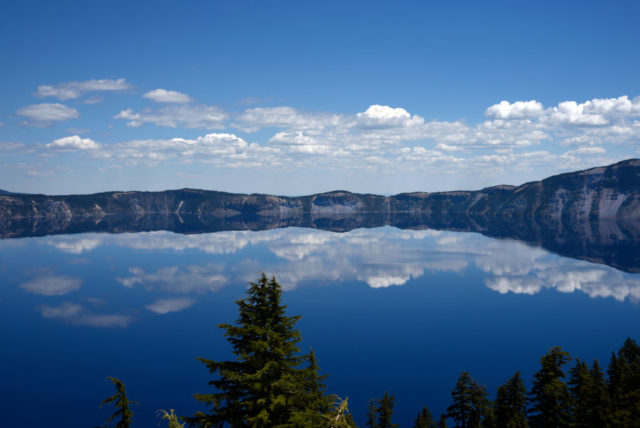
Interestingly, there are no rivers or other waterways attached to Crater Lake, meaning it is only refilled by precipitation. This is the deepest lake in the US at 594 meters. There are also two small land masses located in the water, Wizard Island and Phantom Ship. This location attracts not only outdoor enthusiasts for the myriad of activities in the park, but also artists and photographers who hope to capture the natural beauty of the space.
Acadia National Park, Maine
On the Maine coast, Acadia National Park encompasses not only the mainland but a series of outlying islands as well. It was first established on July 8, 1916 as Sieur de Monts National Monument by President Woodrow Wilson. In 1919 it was redesignated Lafayette National Park, and finally in 1929, it was given the name that it retains to this day. This a special location that really has it all.
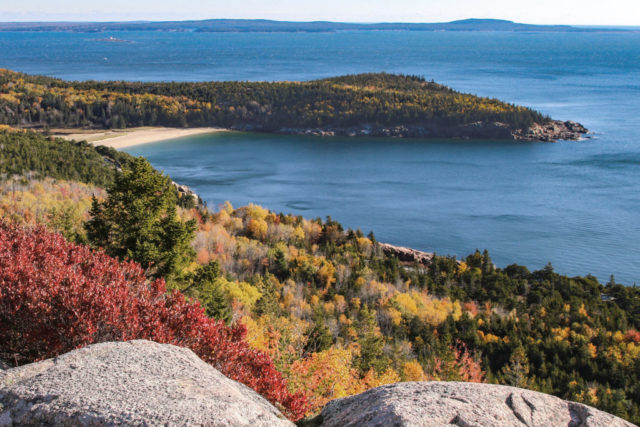
In addition to the impressive coastal environment, the park also contains Cadillac Mountain, the tallest US mountain on the Atlantic coast. Acadia spans an impressive 49,075 acres and features a stone road system that was built for carriages by John D. Rockefeller Jr. between 1914 and 1940. In addition to these roadways that span 45 miles, there are also 185 miles of hiking trails.
Lake Tahoe, California/Nevada
Lake Tahoe is a unique freshwater lake, as it sits directly on the line between Nevada and California – meaning neither state can wholly claim it as theirs. Although it’s a deep body of water at 501 meters, it still doesn’t beat Crater Lake. It does win in the contest of volume, however, coming behind only the Great Lakes. It formed around two million years ago although it was significantly altered during the Ice Age to become what it is today.
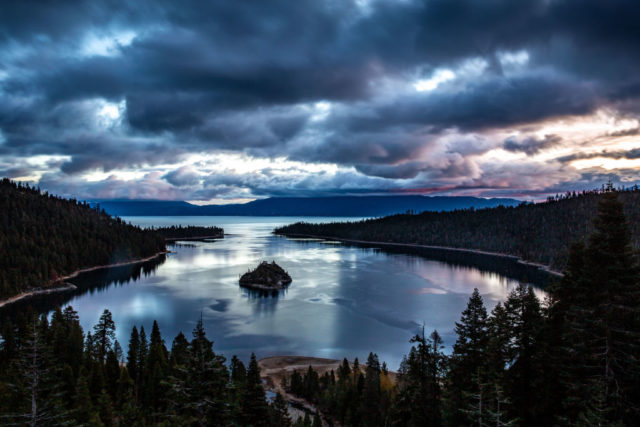
Aside from the astounding natural area around the lake, full of any and all kinds of activities, there is another draw for tourists. It is said that there is a prehistoric creature, known as Tahoe Tessie, living in the lake. Much like the Loch Ness monster, this creature is only occasionally seen, with the last recorded sighting taking place in 1972. Many believe that she lives in an underwater tunnel beneath Cave Rock, while others think that any sightings are simply of large fish.
Yellowstone National Park, Wyoming
Arguably the best-known National Park in the US, Yellowstone is located in Wyoming, with small parts branching into Idaho and Montana. It was the country’s first national park, established on March 1, 1872. There are some who argue that it was actually the first national park in the world. This incredible natural area was designated a UNESCO biosphere reserve in 1976 and a World Heritage site in 1978.
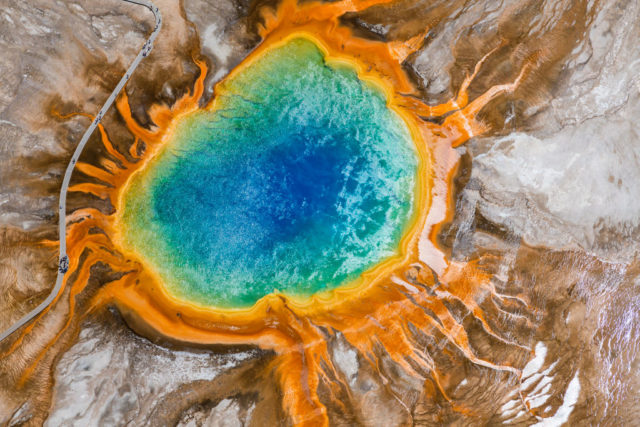
Although there are many impressive areas in the park, one of the most visited locations is the Grand Prismatic Spring – the largest hot spring in the country. Its name alludes to the incredible colors that it produces, spanning the entire rainbow spectrum. Not only does this make it quite stunning to behold, but so does the size. The spring is roughly 110m in diameter and has a depth of 50m.
Mendenhall Glacier Caves, Alaska
Perhaps one of the most impressive, and least popular, places on this list is the Mendenhall Glacier Caves in Alaska. The glacier itself is 12 miles long, and certainly a stunning sight. Yet the caves underneath put it to shame. In order to access them, one must kayak to the edge of the ice and then climb over it to get inside. Once in there, the caves are a beautiful glowing blue caused by the way the light hits the ice.
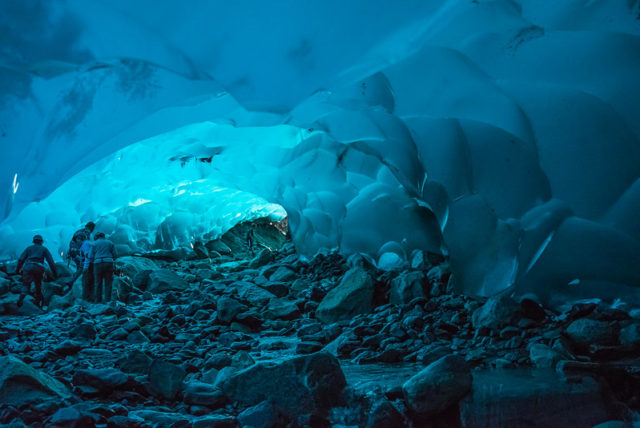
More from us: Titanic’s Wreckage Is Rusting Away and Will Soon Disappear Forever
One unique feature of these caves is that very few explorers will be able to access the same location twice. As glaciers are always changing, so are the caves. They melt, recede, and reform, meaning that what was there one year might be gone the next. The caves are created when water flows through glacial ice and melts it away, only for the space to expand into a proper cave with an attached tunnel.
